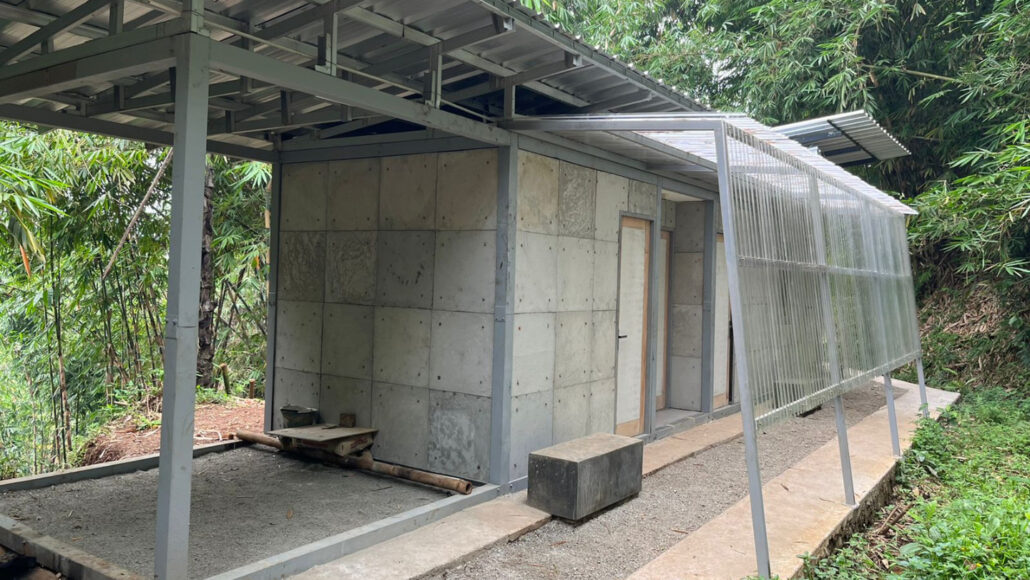A portion of this dwelling was constructed using recycled diapers.

Introducing the "diaper house" - a home designed by researchers with shredded disposable diapers mixed into its concrete and mortar. The construction of a single-story, 36 square meter home can incorporate up to 2 cubic meters of used diapers, according to a team of scientists who reported their experiment in Scientific Reports on May 18. The use of recycled diapers as composite building materials not only shrinks landfill waste, but may also provide a more affordable housing solution to countries such as Indonesia, where there is a demand for low-cost housing but a lack of supply. Urban populations in Indonesia have rising by around 4% annually over the last 30 years, and an estimated two-thirds of Indonesians are expected to live in urban areas by 2025. Shredded disposable diapers contain some of the building materials needed for a home, including wood pulp, cotton, plastic and rayon.
The researchers assessed how much of the traditional building materials could be substituted with washed, dried, sterilized and shredded diaper material without reducing the strength of the structures. They created six samples of concrete and mortar with varying amounts of diaper material combined with cement, sand, gravel and water. The strength of each sample was tested by crushing it to determine how much weight it could bear. The team then designed and built a small, single-story, two-bedroom, one-bathroom home based on the maximum amount of diaper waste they believed they could use. Recycled diapers could replace up to 27% of the traditional materials used in load-bearing structural components without significant loss of strength. For higher structures, the percentage decreased. A three-story home could use up to 10% disposable diapers in its load-bearing structures, while shredded diapers could replace up to 40% of the sand used in nonstructural components like garden paving blocks or wall partitions.
Despite the need for lower-cost housing options, there are obstacles to the adoption of low-impact nonconventional materials like diapers. Recycling diapers requires separating plastic components from organic fibers, a process that is currently only available in developed nations. Indonesia's building regulations limit construction materials to concrete, bricks, wood and ceramics – materials that also contribute to high carbon emissions. "Thinking about how to use waste for other purposes is an excellent idea," says chemist Christof Schröfl of Technische Universität Dresden in Germany. However, he notes that there may be limits to the environmental benefits of repurposing used diapers in buildings due to the challenges of separating and sanitizing the waste. "It's maybe worthwhile to start thinking about ways to replace single-use diapers" with something that is less frequently disposed of, he adds.
As a nonprofit news organization, our mission is to provide accurate, engaging news of science to the public. Your support is vital to our content remaining free and accessible to future generations of scientists and engineers. Help invest in quality science journalism by donating to our cause today.




